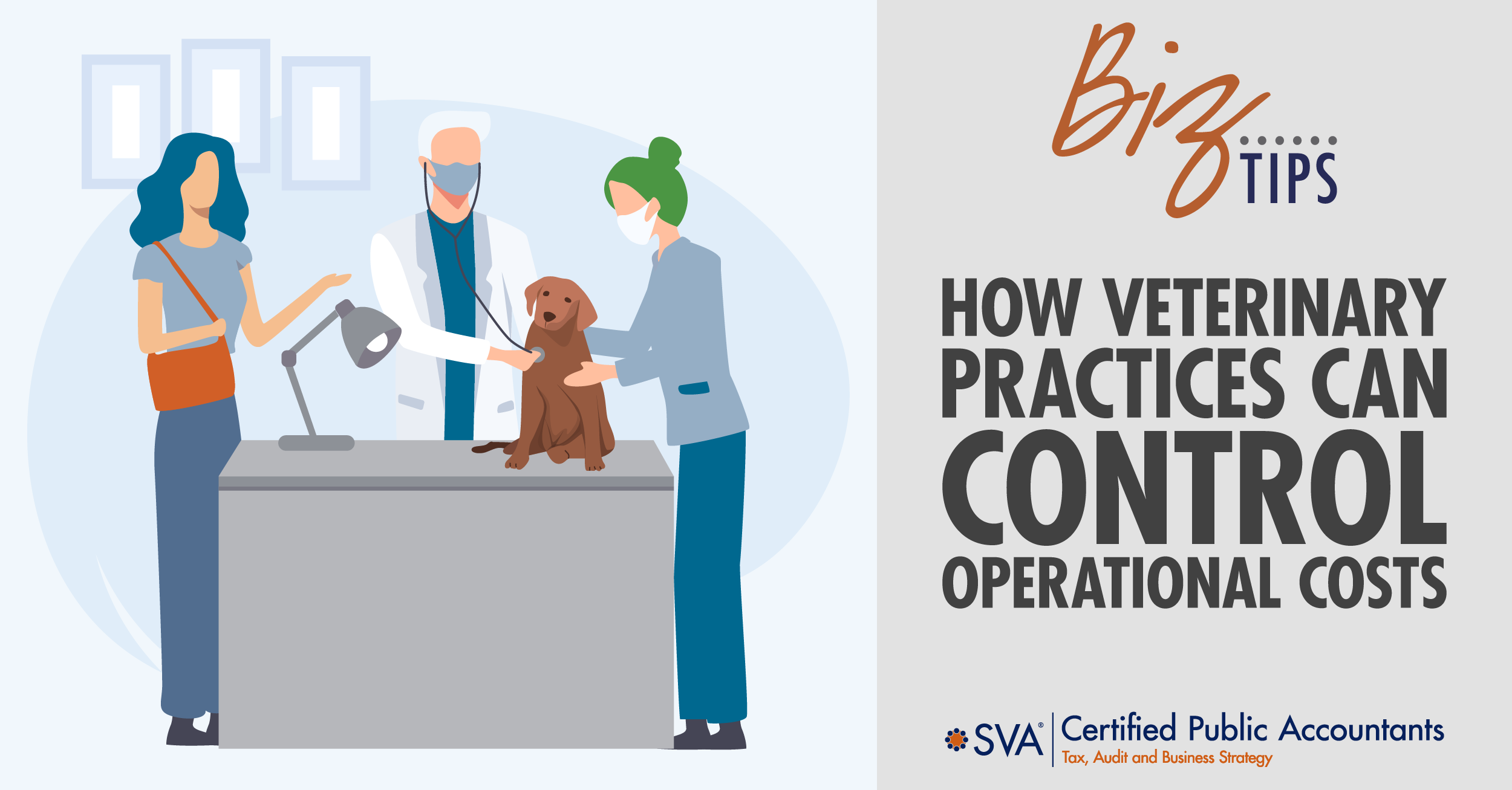| Highlights: |
- Discusses major operational cost areas for veterinary practices—labor, facility, supplies, equipment—and questions to benchmark against peers.
- Offers practical cost-control tactics like staffing optimization, inventory management, supplier pricing negotiations, and maintenance scheduling.
- Emphasizes data-driven decisions to improve efficiency, reduce waste, and support sustainable financial performance for veterinary practice owners.
|
As the owner of a veterinary practice, you are probably concerned about various operating expenses and have questions regarding how to keep them in check.
Common Questions About Vet Practice Operational Costs
Below are common questions vet owners have regarding different operational costs.
Labor Costs
Are our labor costs, including salaries, wages, and benefits, comparable to those of similar veterinary practices in our area?
If your practice is having a hard time hiring veterinarians and support staff, it could be that the wages you are offering are lower than your competitors. Check your competitors’ job listings online to see what they are offering for compensation for comparable positions and look to adjust accordingly.
How can we ensure that we're staffing appropriately to meet the needs of our patients and clients without overspending on labor?
Overstaffing is a good way to increase your labor costs but not having enough staff scheduled can result in negative experiences for your clients, so you need to find a happy middle ground. Look at your past revenue history and trends and use that to help you determine the right staffing levels.
Are there opportunities to improve staff efficiency and productivity to minimize overtime and reduce labor costs?
As with almost everything in this world, there is always room for improvement. Find opportunities to train staff members in multiple positions in the practice. This will give you more flexibility with staffing as you will have multiple staff members able to fill multiple positions, possibly alleviating overtime and increasing productivity.
Facility Expenses
Are our facility expenses, such as rent, utilities, maintenance, and insurance, in line with industry standards for veterinary practices of our size?
Many facility expenses can vary based on location. Rent will vary from state to state and even within different parts of some cities. Insurance will vary based on the needs of the practice and the location of the clinic.
Most clinics have some control over utilities. Using LED lighting and proper temperature control can help keep utility costs down, along with other methods. Keeping lights off in unused exam rooms and powering off equipment that is not in immediate use are a few more tactics to use.
Maintenance costs can be kept low by keeping a regular maintenance schedule for the facility and equipment. Routine maintenance can usually keep machinery and equipment running smoothly and these routine checks can catch smaller problems before they become larger, more expensive problems.
How can we optimize our facility usage to minimize costs while maintaining a comfortable and inviting environment for clients and patients?
Empty, unused space is usually wasted money. Can the internal layout of the practice be redesigned to make the most use of the available space? Find ways to utilize space to maximize the cost associated with it.
Are there areas where we can renegotiate contracts or explore alternative suppliers to reduce facility expenses without sacrificing quality or service?
If your practice is renting space for your clinic, reach out to the owner and see if there are ways to lower the rent, such as agreeing to stay for X number of years at a reduced monthly rate.
For facility maintenance, look at current employees and see if there are areas where cross-training could help cover the maintenance duties. For example, do you have a cleaning service come in to clean every night? Spread out these cleaning duties to staff members and save on cleaning costs.
(Download Video Transcript)
Medical and Surgical Supplies
Are we spending an appropriate amount on medical and surgical supplies compared to other veterinary practices with similar caseloads?
It may be difficult to know exactly how much other vet practices are spending on supplies unless you are part of a group of practices under one owner. Research the medical and surgical supplies your practice uses, and price compare among multiple vendors. If other cheaper versions or brands are available, see what the reviews are or request samples you can try. You may find a less expensive alternative that works as well as the more expensive version.
How can we improve inventory management practices to minimize waste, prevent stockouts, and control supply costs?
Using computer software to help with inventory management will help control waste and supply costs. It doesn’t need to be the most expensive software with all the bells and whistles, a simple spreadsheet could be used to track inventory. The most important part of inventory management is to make sure it is done regularly and correctly. A quick count of supplies done in a hurry could result in the overordering of supplies based on bad information.
Once a regular schedule is created, you can use this data over time to determine trends and this data will be used as a reference for future orders.
Are there opportunities to negotiate better pricing or bulk discounts with suppliers to lower our expenses for medical and surgical supplies?
It never hurts to ask your suppliers if better pricing is available or if they offer bulk discounts for some supplies. Having multiple vendors that offer the same supplies will also allow you to negotiate for better pricing. Bulk discounts can save the practice money, but be careful of what supplies you are ordering in bulk. If they are supplies that have expiration dates, make sure your practice will be able to use most or all of them before it expires, or you will have waste that will increase your operational costs.
Equipment and Technology
Are our expenses for equipment purchases, maintenance, and upgrades reasonable compared to industry benchmarks?
The answer to this question will vary depending on what services your clinic offers compared to others. If you offer more services, you probably require more equipment to provide those services and therefore have higher equipment costs.
Creating a regular maintenance schedule for equipment will reduce equipment downtime. It can also catch issues that can be fixed before becoming bigger problems that will cost your practice time and money.
Whether you are thinking of upgrading equipment or looking to purchase or upgrade software, do your due diligence and research to make sure the upgrades are necessary at that time or if they can wait. Prioritize any upgrades and spread them out, if possible, so the associated costs don’t hit all at once.
How can we prioritize equipment investments to ensure we have the necessary tools while managing capital expenses effectively?
Start by separating your “needs” and your “wishes”. Look to fill your “needs” first, considering how the investment will improve your practice. This could be new software to help you manage your inventory or it could be upgrading older equipment to extend its service life. Determine the impact of each investment and how it will help the clinic create revenue and service clients efficiently.
Are there opportunities to lease or finance equipment instead of purchasing outright to spread costs over time and preserve cash flow?
Compare the costs between leasing and owning equipment and figure out which would be a better fit for your clinic. While purchasing may have a higher initial cost, you will be able to depreciate the equipment over time.
The laws regarding accelerating depreciation for all types of equipment purchases are ever-changing. It’s important to consider how taking advantage of these rules could significantly reduce your net after-tax cost of making these important equipment additions to your practice.
Keep Your Costs Low
Failing to keep operational costs low affects your cash flow, which in turn affects the practice’s ability to grow and meet financial obligations.
If your practice is having issues with inflated operational costs and is not sure how to get them under control, reach out to one of our professionals for more information.

© 2024 SVA Certified Public Accountants

